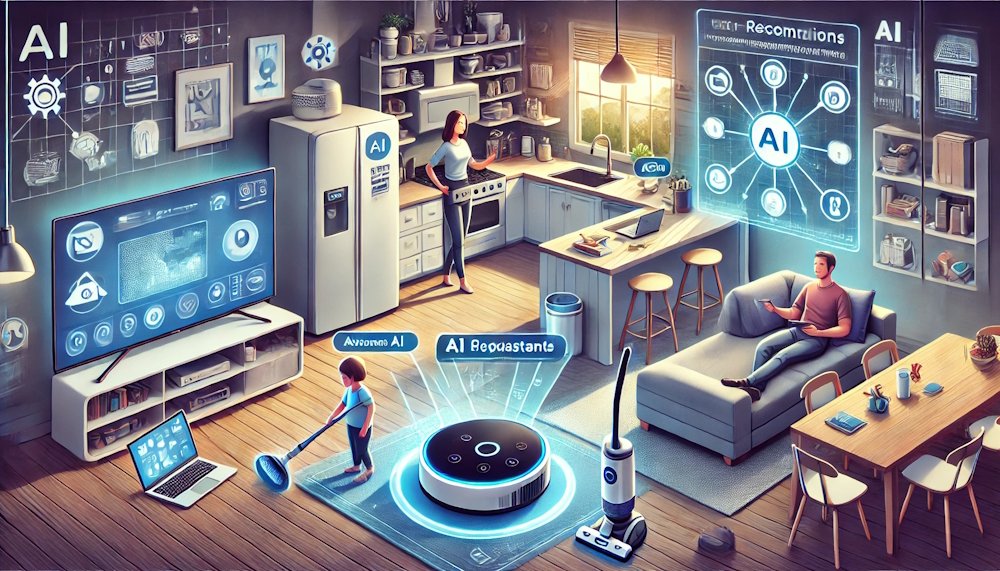
In 2025 AI Tech is no longer a distant dream or niche tool — it’s woven into our daily life. From automating household chores to helping manage health, AI has become a silent partner that enhances our lives in countless small, meaningful ways.
This site aims to keep you up to date with the latest AI Tech innovations you can use today, explain what they really do, and explore how to adopt them wisely.
Why AI Tech Matters in Daily Life
1. From Lab to Living Room
AI Tech has rapidly moved out of research labs and into consumer devices, apps and systems. According to the 2025 AI Index Report, the number of FDA-approved AI medical devices jumped from 6 in 2015 to 223 by 2023 — illustrating how AI is becoming a practical tool in health care.
Meanwhile, “agentic AI” — systems that don’t just respond but take action across multiple steps — are being embedded into enterprise workflows. In 2025, AI agents can autonomously process payments, detect fraud, and coordinate downstream steps.
2. Real Adoption, Real Stakes
AI use is spreading fast. Consumer AI Tech adoption has surged: in 2025, nearly one in three people use AI daily.
And according to Gartner, by 2025, 80% of customer service and support teams will use generative AI tools to assist human agents.
This means AI Tech is becoming part of the infrastructure around us — so it’s important to understand both its benefits and implications.
Five Ways AI Is Transforming Everyday Life
1. Smart Homes That Think for You
Your home is getting smarter — and more intuitive. Recent announcements from Samsung reveal that in 2025, many appliances (TVs, fridges, speakers) will incorporate ambient sensing — using motion, sound, and context to respond proactively, not just when prompted.
Imagine your room adjusting lighting and temperature when it senses you’re reading, or security systems distinguishing between a pet and an intruder.
2. Health Monitoring & Proactive Care
Wearables and AI-powered medical tools are pushing care from reactive to preventive. AI can analyze heart rate trends, detect irregularities, and alert you (or your doctor) before symptoms emerge.
In the broader medical field, AI is now used in imaging, diagnostics, and treatment-planning systems.
3. Personal Productivity & Digital Assistants
Whether at home or work, AI Tech is helping with time management, writing, research and all aspects of everyday life.
- Virtual assistants (Siri, Alexa, Google) are smarter than ever, adapting to your habits.
- AI tools can help summarize emails, suggest drafts, or auto-organize tasks.
- Platforms are integrating autonomous agents so one AI can coordinate several tasks (e.g. marketing workflows) without manual triggers.
4. Intelligent Shopping & Retail
Shopping is getting easier — and smarter.
- Amazon is testing an AI tool called “Interests”, where you can use natural prompts (e.g. “gift ideas for a coffee lover”) and the system recommends matching products.
- In physical stores, “smart carts” with cameras, scales, and sensors can scan your items as you shop, update totals in real time, and let you checkout without waiting in line.
5. Next-Gen Robotics in Daily Tasks
Robots aren’t just for factories anymore.
DeepMind’s new models, Gemini Robotics 1.5 / ER 1.5, show progress in planning and executing multi-step tasks — like sorting laundry or organizing recyclables.
This hints at a future where household robots assist with chores and repetitive tasks.
Emerging Trends to Watch
- Vision-language-action models: AI that sees, reasons, and acts; enabling more natural robot behavior across domains.
- Gaze-triggered assistants: Researchers are developing systems (e.g. “Look and Talk”) where simply looking at an AI avatar in AR glasses can activate it — no button or wake word needed.
- Smart object voices: The “Talking Spell” system experiments with giving personality to everyday objects (making your cup or lamp talk).
- Consumer AI dynamics: Studies show that consumer AI use is ahead of monetization — there’s a growing gap between adoption and spending.
- Deepfake and content authenticity tools: As AI-generated content rises, systems like Vastav AI, which detect manipulated media, gain importance.
Tips for Smart and Responsible AI Tech Use
| Tip | Why it helps |
|---|---|
| Start small | Try one AI tool (e.g. smart thermostat, writing assistant) before adopting many |
| Stay in control | Use devices where decisions run locally rather than sending all data to the cloud |
| Know your data | Read permissions — understand what personal information your AI tools access |
| Keep human oversight | AI is a helper, not a judge — validate important decisions yourself |
| Watch for bias | AI models can reflect historical biases; question suspicious outputs |
| Update & audit | Regular updates and checks help protect from security and privacy risks |
Join the AI Tech for Life Conversation
This site will feature:
- Explainers and how-tos: Clear guides on setting up and integrating AI into your life
- Reviews and comparisons: Side-by-side looks at real AI products and services
- Interviews with innovators: Voices from AI developers, ethicists, and users
- News & trends: Weekly updates on breakthroughs, new tools, and societal impacts
Whether you’re AI-curious or already using smart tools, this is your hub to understand what’s real, what’s hype, and how to benefit from AI — safely. Let’s explore the future, together.
